Need strategies on how to teach listening skills in kindergarten, first, and second grade? You’re in the right place! Through listening, we can improve our students’ comprehension, ability to follow directions, and help them on the road to becoming self-sufficient. Now, I know I don’t have to convince you that listening skills are important, the reason you’re here is to figure out how to improve listening skills in your young learners. In this post, I’m sharing research-based resources and strategies (including a freebie!) that will help your students improve their listening skills.
Reasons for Improving Listening Skills in Students:
As you know, kindergarten, first, and second graders are naturally curious little people. They want to learn more about the world around them. We can harness that curiosity by helping them improve their listening skills.
Becoming a good listener takes practice and time. Just like it’s important that we explicitly teach phonics and math skills, it’s important that we also explicitly teach behaviors to improve listening skills. This allows students to understand that active listening is a priority.
Why We Should Explicitly Teach Listening Skills:
- Improves communication skills with students’ teacher(s) and peers
- Students develop a deeper understanding of the concept(s) being taught
- Builds confidence in students
- Improves relationship skills
- Reduces frustration that often leads to shutting down
- Promotes empathy
Listening Tactics to Share with Students
Here are some specific listening tactics that you can share with your students to help them develop better listening skills. You may want to jot these down or take a screen shot of them so you can embed these strategies into your routine. You may even want to create an anchor chart or bulletin board so you can reference these strategies regularly in your classroom.
STAR:
A helpful acronym to remind students how to listen while standing for Sit up, Track the speaker, Ask and Answer questions, and Respect those around you.
SLANT:
Another acronym that will help your students remember to listen well. It stands for Sit up, Listen, Ask questions if they’re needed, Nod your head, and Track the speaker.
Listening Ears:
For little learners, it is a good reminder to ask them to put on their listening ears when something important is being said. For this one, you can even use nonverbal cues to remind students that they need to be paying close attention.
Calm Bodies:
Sometimes our kiddos in primary grades move. Sometimes they move a lot. As teachers we know that is part of the gig, but sometimes we need them to have calm bodies. Reminders for calm bodies, still hands, and quiet voices can have verbal or nonverbal reminders in the forms of body language or posters in the classroom.
Practice Patience:
This is a skill we all can use practice on sometimes. It is especially good for learners in primary grades to be reminded that we need to listen to what someone else is saying and let them have their turn to speak before jumping into a conversation.
Summarize:
A great tool for improving reading comprehension and listening skills is to read texts with students and have them summarize, or retell the stories in their own words.

Improve Listening Skills with Games & Activities
Some of the best ways to practice listening skills are with games. Below are some fun and engaging games that will help students develop better listening skills.
Red Light, Green Light:
An oldie, but a goodie. Line your students up and teach them how to play. Stand at least 20 feet away from them before beginning your commands. Green light means run towards the speaker as fast as you can. Yellow light means slow down. Red light means everyone has to stop. Call out the colors at random until one or more students reach the speaker. After they understand the game, let your students take turns shouting out red, yellow, or green light.
Listen to Nature:
If possible, take your students to a place in nature where they can observe the world around them without loud noises or interruptions. Ask students to lay on the ground, close their eyes, and listen. With their eyes closed, call on individual students to share what they hear when they are focused on listening to nature.
Listening Memory Game:
There are many variations of this game that can be played in the classroom while practicing the listening skill. My favorite is to break out a few instruments or things that make different noises. I use a bell, a drum, a cheap slide whistle, and an empty bottle to crunch. For each sound, students are supposed to do something different. For instance, when they hear the bell they should jump up and down. When they hear the drum, they should stand on one leg. For the sound of the slide whistle, they should run in place. Finally, for the sound of the crunchy water bottle, students should lie down on the floor.
Animal Sounds:
Play recordings or make different animal sounds for your students to guess which animal is making the sound. This is a great game for practicing listening, patience, and taking turns as many students will know the answer, but only one can be called upon at a time.

Listen and Draw:
Lastly, we have our Listen and Draw resource. In this Listen and Draw Bundle there are 4 sets of 25 listen and draw sheets included in each. The idea is that students get a sheet of paper with a simple scene drawn on it. Next, they listen to the instructions the teacher gives. There are six instructions per scene and your students are supposed to listen to the instructions and draw what the instructions say. Finally, students listen carefully to know how many stars to put in the sky, or where the farmer is standing in relation to his cow. This bundle is so much fun for students to listen to instructions and have fun all the while.

Summary
No matter how you incorporate practicing listening skills in your primary classroom, it will be helpful for your students. These little learners definitely can use a leg up when it comes to practicing how to listen. Listening skills are something we work on our entire lives, so the sooner we start practicing the better. Your students are sure to have fun practicing listening skills with some of these ideas. Let me know what works best for your classroom and which ideas you’re going to try next.

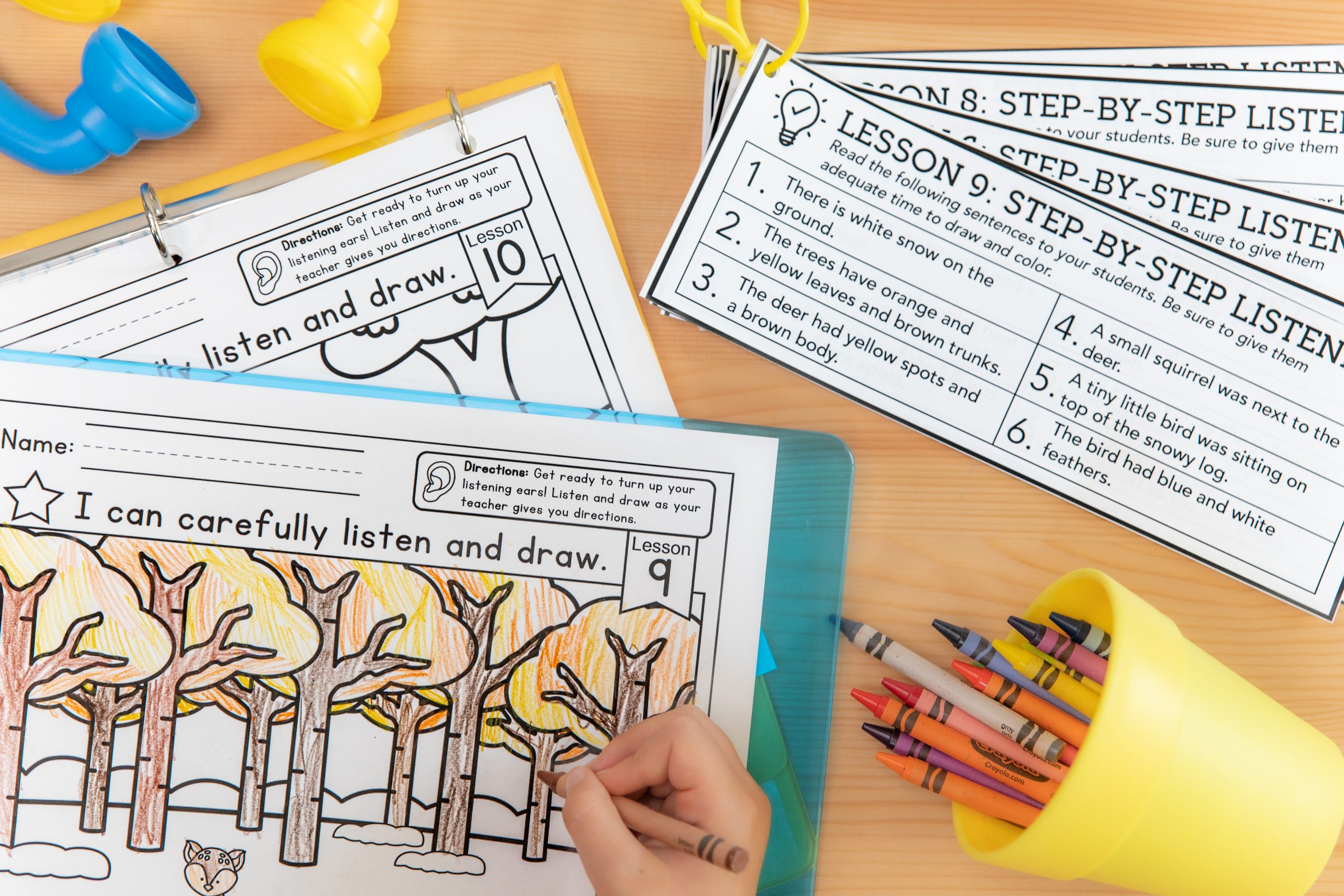
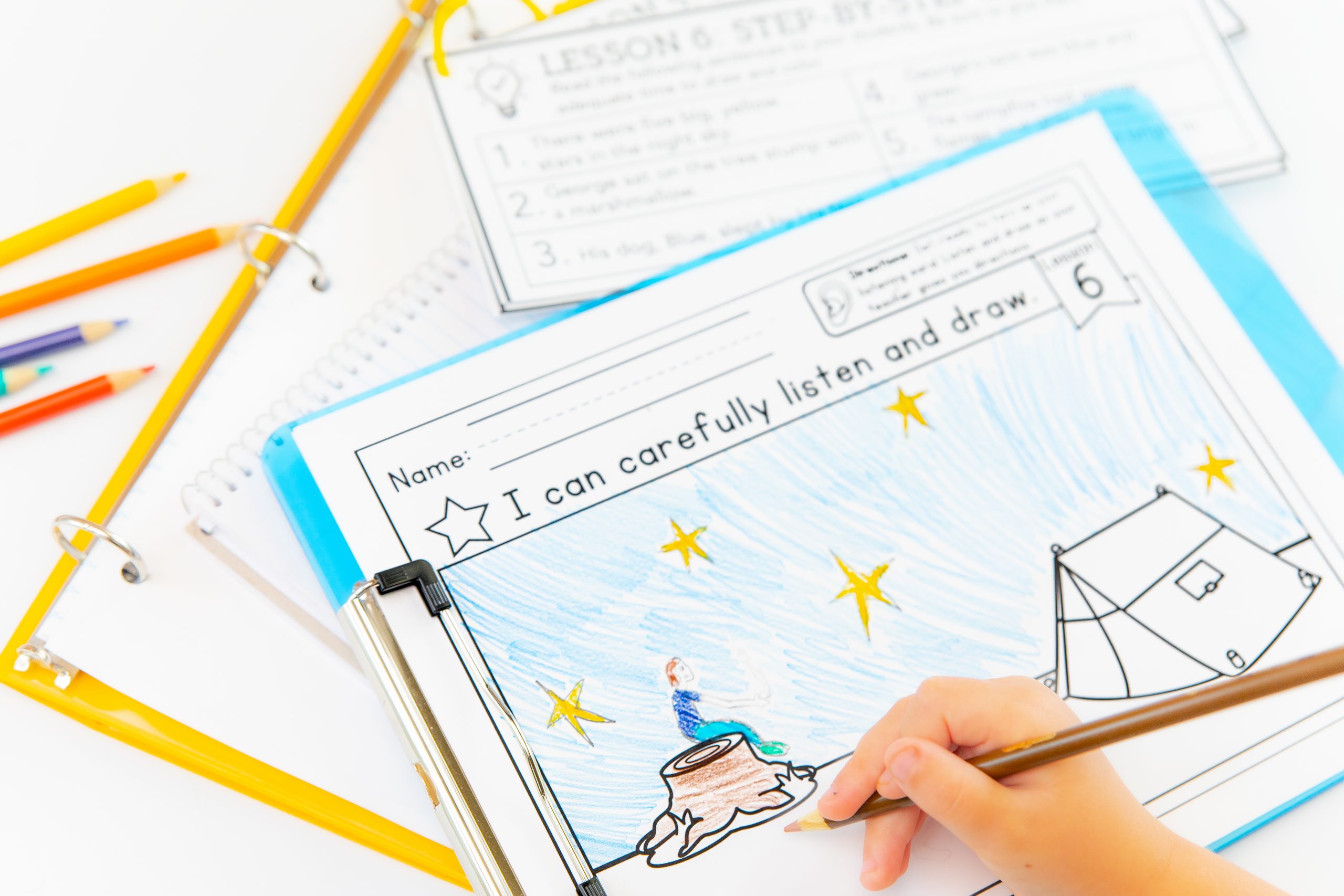
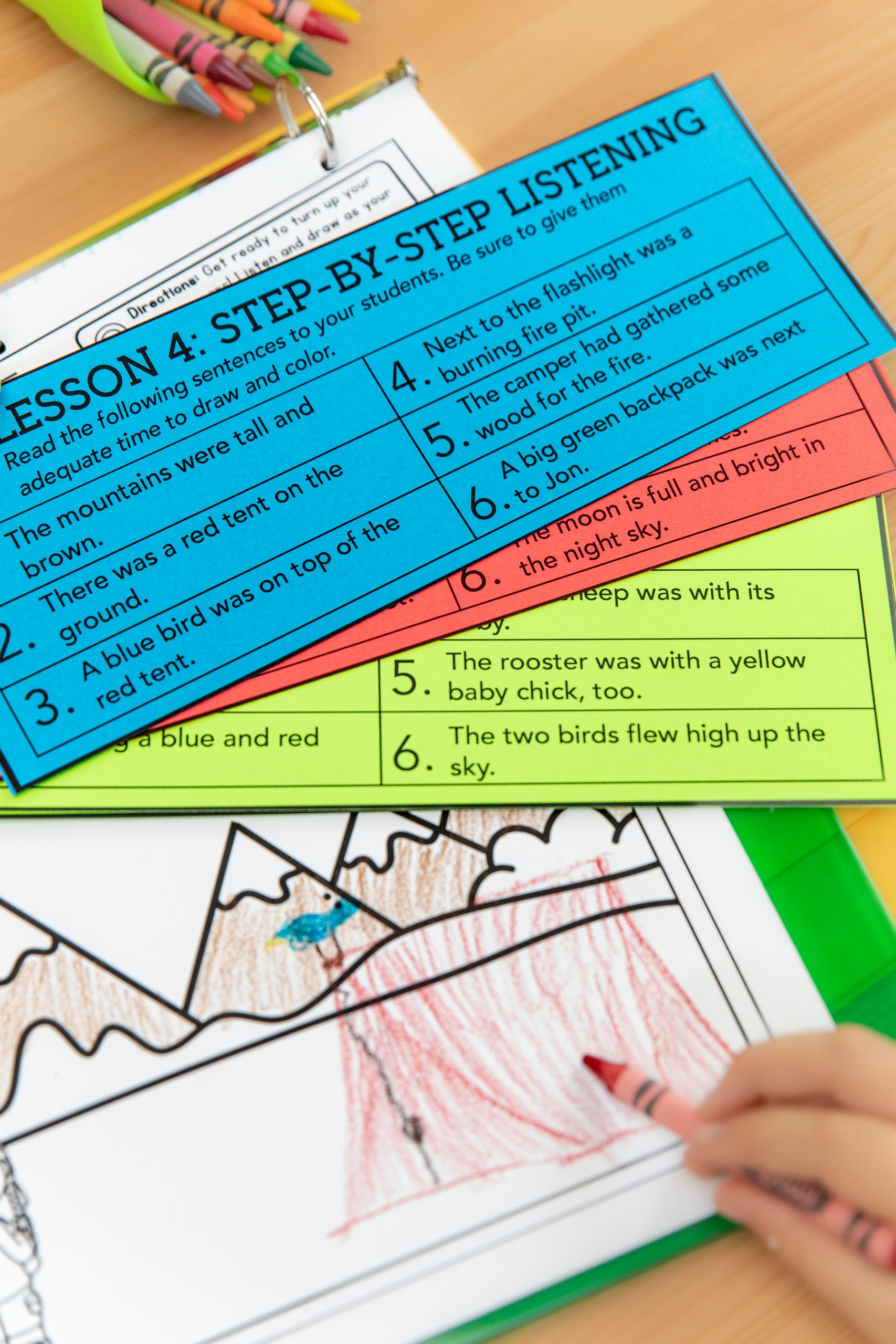
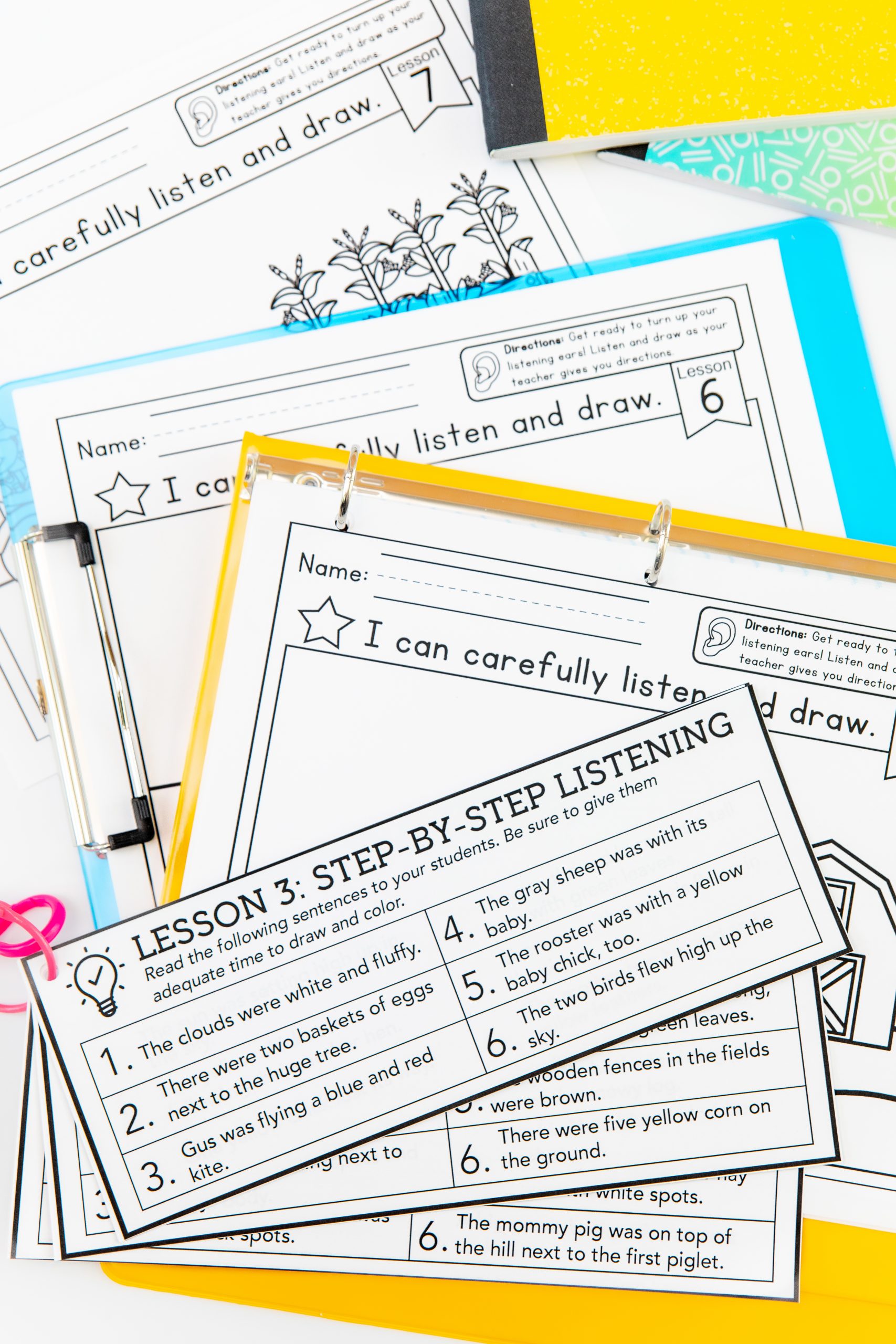
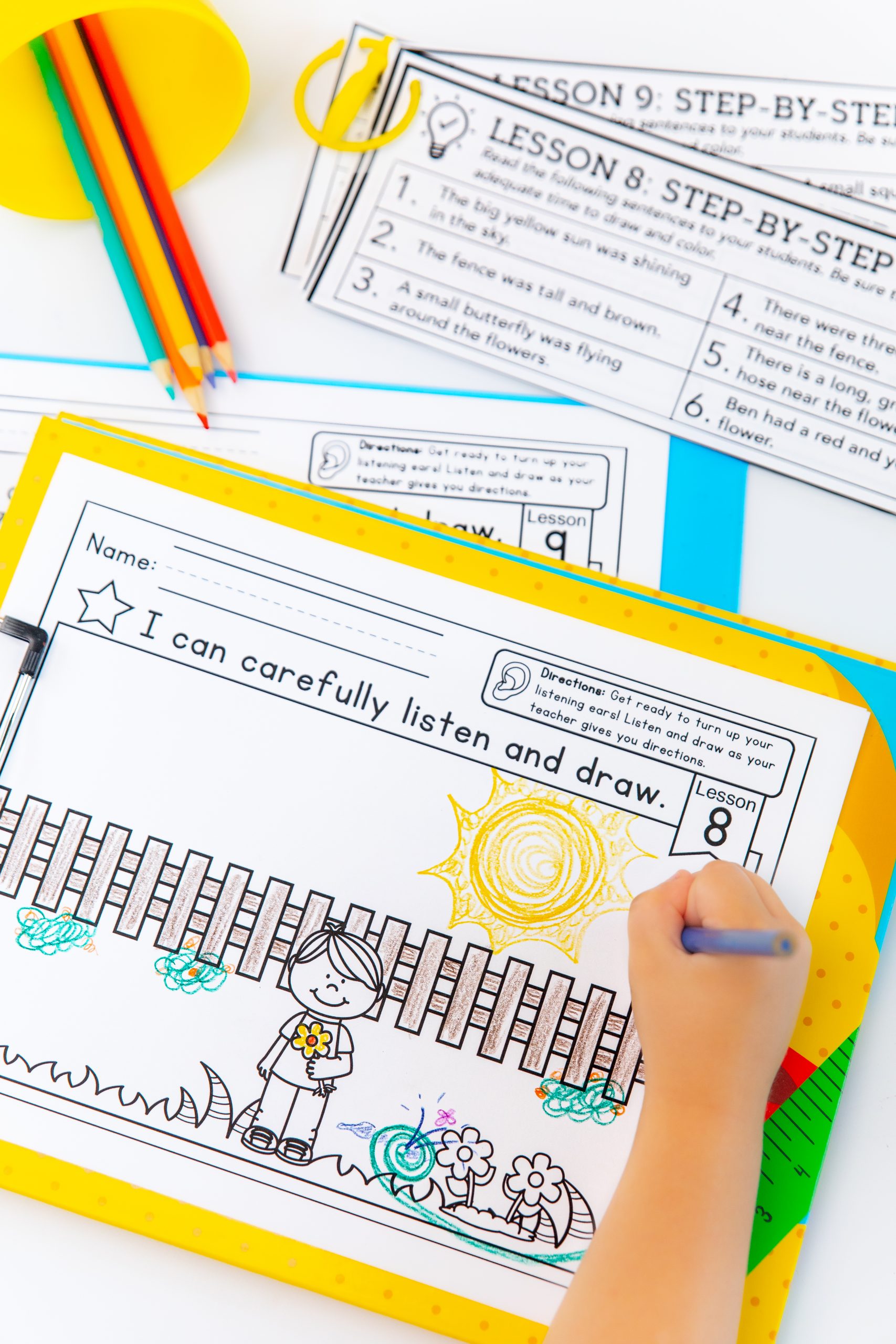

Mary
April 11, 2022Great Idea …. Our problem as a culture is that we are too visual… my two boys learned how to read because we listened to so many stories on cassette while we drove … really rich stories…my kids aced Accelerated Reader because we listened the stories …
Years ago the Wright Group presented at our school…. they used a study done in Australia … with the invention of the airplane people became mobile from all the surrounding islands and the schools were nervous because kids were not reading from the islands but those kiddos did great and learned how to read quickly because of the oral language they heard first!! We were meant to learn three dimensionally…I do not take out my laptops for that purpose…; and with the debacle of covid and online learning .. case in point!! Have a great day